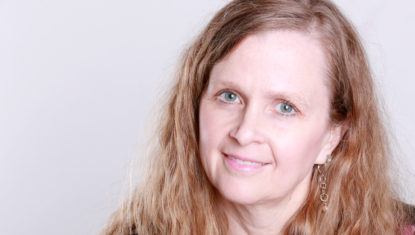Wrist buckle fractures are among the most common injuries in children. Until recently, the North American practice preference was to immobilize these injuries with casts. CHEO researchers have found, however, that children treated with a removable splint had better physical functioning, had fewer difficulties with activities, returned to sports sooner, and suffered no greater pain than those treated with casts.
Related News
Research Projects
-
Poster 246: Epidemiology of Tibial Spine Fractures in Children: A National Multicenter Study
31/07/2024
This study represents, to our knowledge, the largest epidemiological report to date of pediatric patients with tibial spine fractures. TSFs were more common in males than females (66.1% male), and the median age at injury was 12.2 years, which falls within the commonly reported range of 8-14 years. Furthermore, only 5.8% of patients had closed regional physes, corroborating the theory that TSFs are more likely to occur in skeletally immature individuals. We believe the data presented in this study can be useful towards patient counselling by providing a comprehensive view of the common presentations of and treatment pathways for tibial spine fractures in the pediatric population.
-
How Is Variability in Femoral and Acetabular Version Associated With Presentation Among Young Adults With Hip Pain?
07/05/2024
Based on the central acetabular version and femoral version as measured by Murphy, hips were grouped according to their rotational profile into four groups: unstable rotational profile: high (high acetabular version with high femoral version) or moderate (high acetabular version with normal femoral version or normal acetabular version with high femoral version); normal rotational profile (normal acetabular version with femoral version); compensatory rotational profile (low acetabular version with high femoral version or high acetabular version with low femoral version); and impingement rotational profile (low acetabular version with low femoral version): high (low acetabular version with low femoral version) or moderate (low acetabular version with normal femoral version or normal acetabular version with low femoral version). Radiographic assessments were manually performed on digitized images by two orthopaedic residents, and 25% of randomly selected measurements were repeated by the senior author, a fellowship-trained hip preservation and arthroplasty surgeon. Interobserver and intraobserver reliabilities were calculated using the correlation coefficient with a two-way mixed model, showing excellent agreement for Murphy technique measurements (intraclass correlation coefficient 0.908 [95% confidence interval 0.80 to 0.97]) and Reikerås technique measurements (ICC 0.938 [95% CI 0.81 to 0.97]). Patient-reported measures were recorded using the International Hip Outcome Tool (iHOT-33) (0 to 100; worse to best).
-
The evolving role and technique of hip arthroscopy in children and adolescents
25/04/2024
Hip arthroscopy has come a long way from the initial description of the endoscopic visualization of the hip joint nearly a century ago. The development of pediatric and adolescent hip arthroscopy has largely paralleled, and trailed shortly behind, the recent growth and technical development in adult hip arthroscopy over the last twenty years. In the adult or general literature, large randomized controlled trials, observational cohorts, and national registries have made hip arthroscopy one of the most closely studied surgical techniques in orthopaedics, and have demonstrated that hip arthroscopy provides efficacy and clinically important benefit in specific indications. Although similar evidence is not yet available for pediatric and adolescent patients, the growing experience and opportunity in the area have led to incredible development in the field and further embrace of hip arthroscopy as a surgical tool and technique with important pediatric impact and even more so future potential.
-
Predictors of True Scaphoid Fractures in Children
27/02/2024
This study is a retrospective cohort study of children presenting to a tertiary pediatric hospital with hand or wrist injuries. Patients were grouped based on the presence of a true scaphoid fractures (confirmed on imaging) or those with clinical suspicion of a scaphoid fracture alone (no radiographic evidence of fracture). Demographic and clinical characteristics were compared with univariate and multivariate statistics to identify fracture predictors.
-
Standardized growth charts for children with osteogenesis imperfecta
15/03/2023
Our standardized OI type- and sex-specific growth charts can be used to assess the growth of individuals with OI from infancy to adulthood.
-
Risk factors associated with prevalent vertebral fractures in Duchenne muscular dystrophy
07/11/2022
Readily measurable clinical variables were associated with prevalent VF in males with glucocorticoid-treated DMD. These variables may be useful to identify candidates for primary osteoporosis prevention after glucocorticoid initiation.
-
Impact of a Prenatal Vitamin D Supplementation Program on Vitamin D Deficiency, Rickets and Early Childhood Caries in an Alaska Native Population
22/09/2022
-
Protocol for the systematic review of return‑to‑activity criteria in adolescent patients following an anterior cruciate ligament reconstruction
14/05/2022
Our objective is to systematically examine the literature and identify the criteria used when determining unrestricted RTA following an ACL reconstruction in an adolescent population.
-
The Toddler’s Fracture
01/01/2022
Although a stable fracture with an excellent prognosis, opportunities exist to improve toddler's fractures diagnosis and treatment protocols, to optimize clinical management.
-
Bone mineral Density Surveillance for Childhood, Adolescent, and Young Adult Cancer Survivors: Recommendations from the International Late Effects of Childhood Cancer Guideline Harmonization Group.
09/09/2021
These recommendations facilitate evidence-based care for childhood, adolescent, and young adult cancer survivors internationally.
-
Intravenous zoledronic acid versus placebo in children with glucocorticoid-induced osteoporosis: A randomized, double-blind, multi-national phase 3 trial
06/07/2021
LSBMDZ increased significantly on ZA compared with placebo over 1 year in children with GIO. Most AEs occurred after the first infusion.
-
When Should Bisphosphonates Be Used in Children with Chronic Illness Osteoporosis?
19/06/2021
The decision to treat a child with a bisphosphonate hinges on distinguishing bone fragility from typical childhood fractures, and determining the potential for medication-unassisted recovery following an osteoporotic fragility fracture. While improvements in BMD are a well-known sign of recovery, restitution of bone structure is also a key indicator of recuperation, one that is unique to childhood, and that plays a pivotal role in the decision to intervene or not.
-
Vitamin D supplementation for children with cancer: a systematic review and consensus recommendations
08/06/2021
Further research is needed; until then, we recommend dietary vitamin D/calcium intake in keeping with standard national guidelines, and periodic 25OHD monitoring to detect levels <20 ng/ml. Vitamin D/calcium supplementation is recommended in children with low levels, to maintain levels ≥20 ng/ml year-long.
-
The Accuracy of Incident Vertebral Fracture Detection in Children Using Targeted Case-Finding Approaches
30/03/2021
These results provide guidance for targeting spine radiography in children at risk for IVF.
-
Advances in Bone Assessment Methods in Children
02/11/2020
INTRODUCTION Pediatric bone diseases present with a variety of signs and symptoms. Although some diagnoses may be straightforward based on history and physical examination, other presentations require more extensive bone assessments. In addition, clinical followup, research studies, and drug trials are predicated on strong bone health assessment.
-
Assessment of longitudinal bone growth in osteogenesis imperfecta using metacarpophalangeal pattern profiles
27/07/2020
COL1A1 and COL1A2 mutations affect bone growth not only by inducing fractures and bone deformities, but also through longitudinal growth deficits in bones that do not fracture or deform.
-
Hands-On Workshops Improve Emergency Department Physicians’ Self-Reported Understanding of Pediatric Hand Injuries
18/05/2020
Knowledge sharing between specialists and generalists through combined didactic and hands-on workshops is an effective and well-received method of refining physician knowledge and increasing confidence in treating subspecialty-specific clinical presentations.
-
The Accuracy of Prevalent Vertebral Fracture Detection in Children Using Targeted Case‐Finding Approaches
01/11/2019
Back pain was assessed by patient report, LS BMD was measured by dual‐energy X‐ray absorptiometry, and PVF were quantified on spine radiographs using the modified Genant semiquantitative method. Forty‐four patients (11.0%) had PVF.
-
Osteogenesis Imperfecta: Skeletal Outcomes After Bisphosphonate Discontinuation at Final Height
04/07/2019
None of the patients sustained a new vertebral compression fracture during follow‐up.
-
Bone Morbidity and Recovery in Children With Acute Lymphoblastic Leukemia: Results of a Six‐Year Prospective Cohort Study
01/05/2018
These results suggest the need for trials addressing interventions in the first 2 years of chemotherapy, targeting older children and children with more severe vertebral collapse, because these children are at greatest risk for incident VF and subsequent residual vertebral deformity.
Researchers
-
Maala Bhatt
Scientist, CHEO Research Institute
-
Sasha Carsen
Scientist, CHEO Research Institute
-
Kevin Cheung
Investigator, CHEO Research Institute
-
Dina El Demellawy
Investigator, CHEO Research Institute
-
James Jarvis
Investigator, CHEO Research Institute
-
Alicia Kerrigan
Investigator, CHEO Research Institute
-
Marie-Eve Robinson
Investigator, CHEO Research Institute
-
Jessica Romeo
Investigator, CHEO Research Institute
-
Kevin Smit
Investigator, CHEO Research Institute
-
Sandy Tse
Investigator, CHEO Research Institute
-
Leanne Ward
Senior Scientist, CHEO Research Institute












